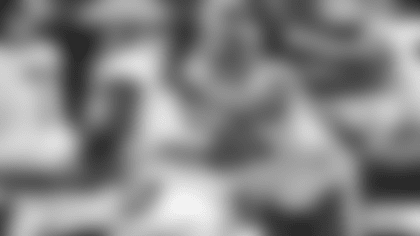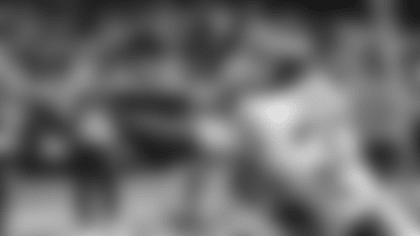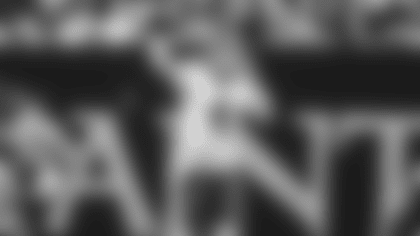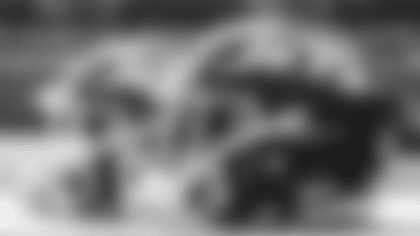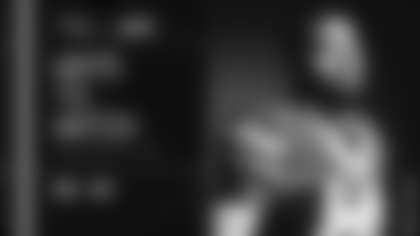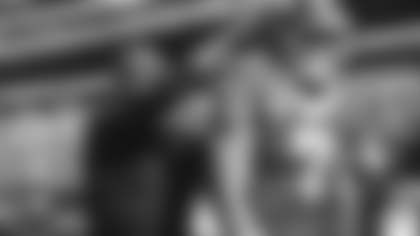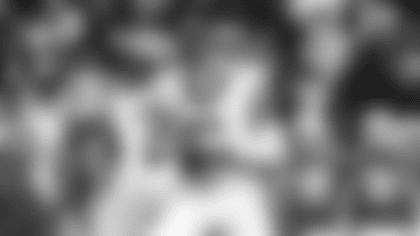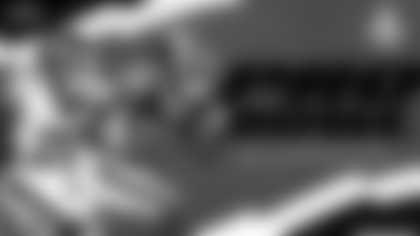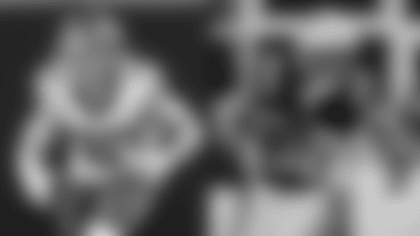
Dave Herman, the New York Jets' stalwart right guard for 10 seasons bridging the Sixties and Seventies and their inspired right tackle for their two games to end that Super season of 1968, has died. Herman was 81.
Herman, one of whose prized possessions was a photo of the Super Bowl III final score — Jets 16, Colts 7 — on the Orange Bowl scoreboard early in the evening of Jan. 12, 1969, recalled some of the magic of that day that shook the Colts, the pro football world and beyond.
"Well, we had a bunch of guys that liked each other, and a bunch of guys who were willing to do the work to make it happen," he said. "I've got memories, that's what we've got,"
"Dave and I came in together in '64," John Schmitt, the Jets center and Herman's next-door line neighbor for years, said emotionally upon hearing the news. "We went through some stuff together. I'm really sad. He was a hell of a guy, a hell of a player and a great teammate."
Herman's fond recollections began to accumulate five years after he began his pro career as the focus of one of the early tugs-of-war between the New York market's two pro teams. An Ohioan who played his college ball at Michigan State, Herman was drafted by both the Jets and the Giants in 1963. The Giants in the '63 NFL Draft selected him in the eighth round (110th overall). The Jets took Herman in the '63 AFL Draft's 27th round (211th overall).
The Jets won the battle for Herman, a sparkplug guard about whom then-offensive line coach Chuck Knox said. "Dave has the ability to look 'em in the eye and butt 'em in the numbers."
Herman, who wore his familiar uniform No. 67 from first pro day to last, played in five games in 1964, then moved into his "new home" for the next nine seasons as the Jets' right guard. From 1965-73, he started all 14 games in six of those seasons and for his career played in 128 regular-season games with 118 starts, plus starts in all three playoff games after the 1968 and '69 seasons. At the ends of each of those two seasons, he played in the AFL All-Star Game.
Despite his distinguished career at RG, Herman's most famous two games were probably his two starts at another position — right tackle — on pro football's biggest stages — the AFL Championship Game followed by Super Bowl III — against two of the most feared left defensive ends in the game — Ike Lassiter, the Raiders' seventh-year pro, followed by Bubba Smith, the Colts' ferocious second-year man. Both were coming off regular seasons of 10-plus sacks.
Jets HC Weeb Ewbank had to do some rearranging on his offensive line to replace rookie RT starter Sam Walton at the last second for the AFL title game at Shea Stadium vs. Oakland and then keep Herman there for Baltimore. Ewbank's answer was to move Herman from RG to RT, shift Randy Rasmussen from LG to RG and start Bob Talamini at LG after he had filled in for Rasmussen for seven of the nine games leading up to the playoffs.
Herman's prize was to block Lassiter and then two weeks later, Smith, his old Michigan State teammate. And that was one of the most important sidebars to Joe Namath and the Jets rocking football watchers everywhere with their 27-23 title-game win over the Raiders followed by the triumph over the Colts.
As New York Times columnist Dave Anderson detailed from Miami, except for a 9-yard Smith sack of Namath in the third quarter of the Super Bowl, the Colts DE was "virtually invisible." He was not only effectively blocked by Herman but the Jets were running Matt Snell and Emerson Boozer mostly to the left side against three older Colts, DE Ordell Braase, LB Don Shinnick and CB Lenny Lyles.
''We had to play a smart, tough game to take away the Colts' aggressiveness, especially Bubba's,'' Herman recalled. ''He was 6-7 and he outweighed me 50 pounds — he had to be 310 then. My whole plan was to keep him off balance, hit him before he got his back foot planted. When he had his back foot planted, that's when he used his strength. That's what happened the one time he got by me to sack Joe for that loss. I just yelled, 'Look out!' ''
Throughout the game, Anderson wrote, Herman sensed Smith's frustration.
''He had expected to accomplish something that he wasn't accomplishing,'' Herman said. ''When you go back to those years, after Green Bay had won the first two Super Bowl games, none of the NFL teams wanted to be the first to lose the Super Bowl to an AFL team. When the Colts lost, all that pressure was on them."
And the upward pressure lifted Herman, Namath and all their Jets teammates to the top of the AFL-NFL world a little more than a year before the leagues would fully merge in 1970.
But Herman, who suffered from CTE in his later years, had one more big game against Bubba and the Colts that not everyone knows about. Baltimore RB Tom Matte came up with the idea of the Jets and Colts getting together for an 8-on-8 flag football game for charity. It was played before 12,000 fans at Baltimore's old Memorial Stadium on Oct. 27, 1989.
"At halftime of that game of touch, Bubba changed from sneakers to his football cleats," Ramos recalled. "Joe Namath said to Dave, 'Listen, just let him come. I'm going to throw the ball over him. It'll be sort of a screen pass. They let Bubba go and Joe hit Dave for two consecutive first downs. It was the first time anyone could remember Dave catching a ball, ever.
"Weeb told the players before that game, 'We have to win this game so they don't think the Super Bowl was a fluke
It sounded as if Ewbank was joking. But the Jets prevailed again in the charity game, 18-13. And Dave Herman came through once more.
"Dave was a real pro. He was always ready to play," Ramos said. "And he was such a good guy, too."
Among his endeavors after he retired in 1973, Herman worked as an account executive selling ad time for the Blair Television Company and in radio sports programming. And for five seasons, from 1974-78, he stepped in to block for the big name again, this time legendary broadcaster Marty Glickman as the two teamed up for the Jets' game broadcasts on WOR Radio.





